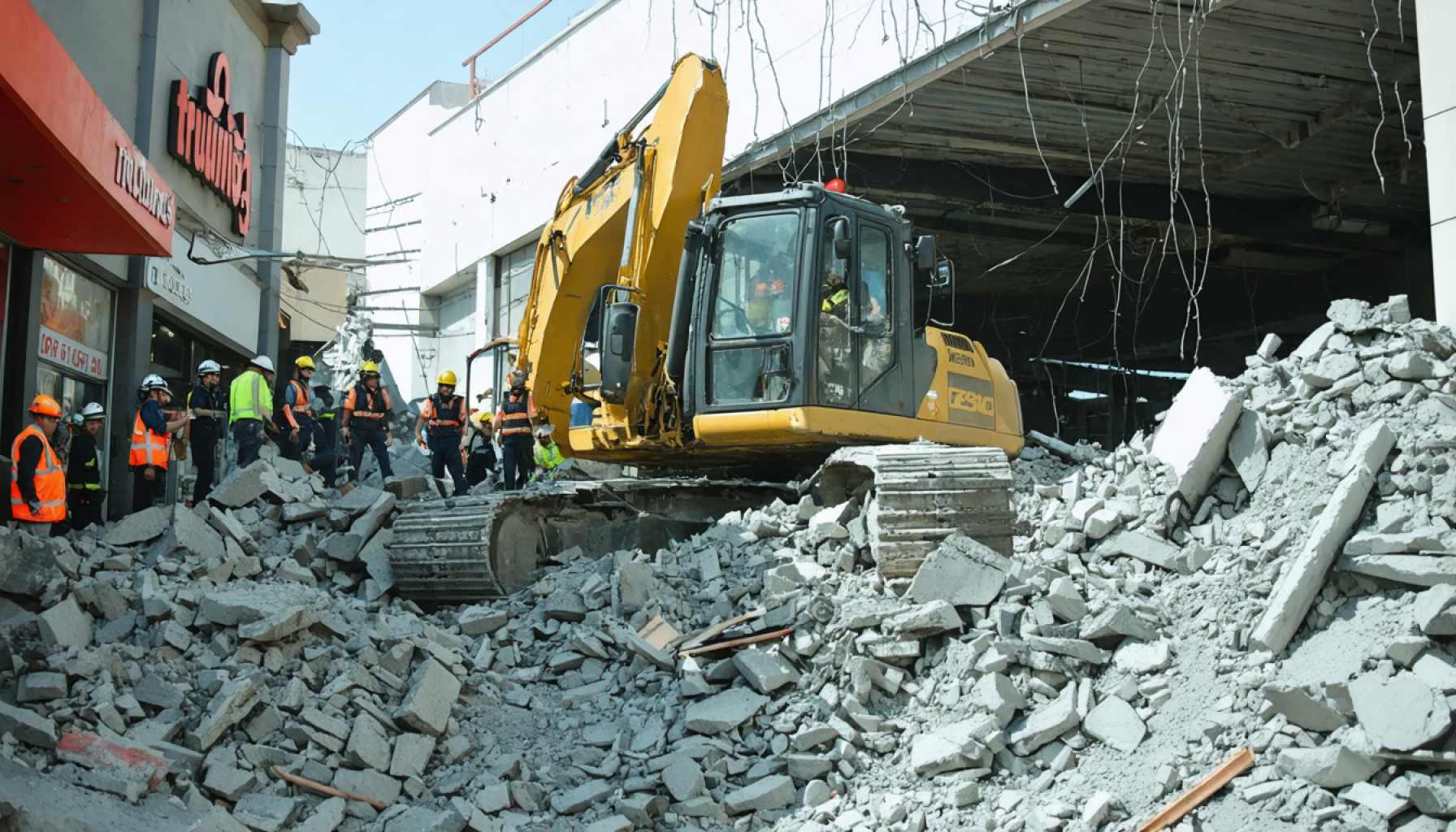- A structural collapse at the Real Plaza shopping center in Trujillo, Peru, injured at least 20 people, sparking chaos and rescue efforts.
- The incident caused widespread panic among shoppers and staff, who described moments of rumbling, screams, and confusion.
- Emergency responders, including the National Police and firefighters, conducted search and rescue operations to locate individuals trapped under debris.
- The event highlights the vulnerability of human-made structures and the unpredictability of daily life.
- The community of Trujillo displayed resilience and unity in response to the disaster.
- The situation underscores the importance of human empathy and quick action during crises, inspiring hope amid adversity.
A quiet morning in Trujillo, Peru, was shattered as chaos erupted at the Real Plaza shopping center. An unexpected collapse sent concrete and debris plummeting, injuring at least 20 individuals. The scene quickly transformed into a frenetic rescue operation, pulling at the heartstrings of a nation.
Inside this modern maze of shops and restaurants, panic swept through the crowds. Those who emerged recount the harrowing seconds of rumbling, followed by screams and confusion. As the dust settled, local hospitals began receiving the injured, who ranged from shoppers to staff members, clutching their injuries as medical staff swiftly attended to them.
Meanwhile, outside the mall, rescuers from the National Police and firefighters acted with urgency. Their mission was clear: find any people trapped beneath the twisted metal and collapsed structures. The sound of sirens blended with the tense anticipation of anxious onlookers praying for good news.
This tragic event underscores the fragility of human-made structures, reminding us of the unpredictability of life. As daylight wanes, the question looms: Will all be accounted for?
In the face of uncertainty, the resilient spirit of Trujillo shines. This community’s response illustrates a profound truth: unity and courage prevail, even in the eye of disaster. As rescue efforts continue, the nation watches, hopeful for heroic outcomes amid the rubble.
As updates unfold, one truth remains clear: the capacity for human empathy and swift action in times of crisis inspires hope, offering a beacon of light—no matter how dark the moment.
Shopping Mall Collapse: Essential Guide to Safety, Prevention and Urban Planning Insights
Real-World Use Cases: Mall Safety and Emergency Protocols
The tragic incident at the Real Plaza shopping center in Trujillo highlights the need for robust safety protocols and emergency preparedness in commercial spaces. Shopping malls around the world can implement several strategies to enhance safety for patrons and staff:
1. Regular Structural Assessments: Schedule periodic evaluations by certified structural engineers to ensure the integrity of buildings. Proactive maintenance can prevent such catastrophic failures.
2. Emergency Preparedness Training: Conduct regular emergency drills for staff and tenants. This includes evacuation procedures, first aid training, and the use of emergency equipment.
3. Advanced Surveillance Technology: Utilize state-of-the-art surveillance and monitoring systems that can detect signs of structural stress or failure.
4. Comprehensive Communication Plans: Implement a clear communication strategy for both internal stakeholders and the public to minimize panic and confusion during an emergency.
Market Forecasts & Industry Trends: Construction and Safety Inspections
The global construction industry is expected to incorporate more technology-driven safety measures, following increasingly stringent building codes:
– Adoption of Smart Technologies: The use of IoT (Internet of Things) sensors in buildings to monitor stresses and structural health is on the rise.
– Sustainable Materials: There is a shift towards eco-friendly and sustainable building materials, which offer enhanced durability and resilience.
– Increased Regulatory Oversight: Governments are likely to implement stricter regulations for the certification and periodic inspection of public structures.
Reviews & Comparisons: Structural Safety Technologies
When comparing structural safety technologies, several options are noteworthy:
– Seismic Retrofitting: Essential in earthquake-prone areas, involving structural enhancements that reduce risks.
– Vibration Monitoring Systems: These can detect unusual vibrations indicative of structural issues, potentially preventing failures.
– Drones for Inspections: Increasing use of drones for building inspections to access hard-to-reach areas and provide high-resolution data.
Features, Specs & Pricing: Structural Health Monitoring Systems
Monitoring systems vary in features and costs. Key considerations include:
– Sensitivity and Accuracy: Multi-sensor setups typically provide more reliable data, detecting minute structural anomalies.
– Remote Monitoring: Systems with cloud-based interfaces allow for real-time updates and historical data analysis.
– Cost Factors: Prices range depending on the sophistication, with basic systems starting from a few thousand dollars.
Security & Sustainability: Design Innovations
The emphasis on sustainability in construction dovetails with enhanced security:
– Green Building Designs: Incorporates natural landscapes and energy-efficient materials, reducing environmental impact.
– Resilient Infrastructure: Buildings designed with redundancy, capable of withstanding more substantial loads or stress.
Quick Tips for Immediate Action
1. Ensure Structural Integrity: Regular checks with certified engineering firms.
2. Emergency Kits: Maintain up-to-date emergency kits with first aid, flashlights, and communication devices.
3. Emergency Signage: Clearly marked exits and emergency procedure signs should be mandatory in all public spaces.
For more information on building safety and infrastructure resilience, visit the following reliable resources:
CDC, FEMA, and WHO.
By adopting best practices and leveraging current technology, we can work towards preventing future tragedies while ensuring safer spaces across the globe.
